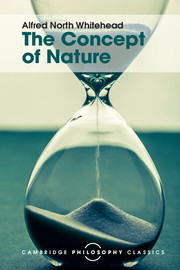6 - Congruence
Published online by Cambridge University Press: 05 November 2015
Summary
The aim of this lecture is to establish a theory of congruence. You must understand at once that congruence is a controversial question. It is the theory of measurement in space and in time. The question seems simple. In fact it is simple enough for a standard procedure to have been settled by act of parliament; and devotion to metaphysical subtleties is almost the only crime which has never been imputed to any English parliament. But the procedure is one thing and its meaning is another.
First let us fix attention on the purely mathematical question. When the segment between two points A and B is congruent to that between the two points C and D, the quantitative measurements of the two segments are equal. The equality of the numerical measures and the congruence of the two segments are not always clearly discriminated, and are lumped together under the term equality. But the procedure of measurement presupposes congruence. For example, a yard measure is applied successively to measure two distances between two pairs of points on the floor of a room. It is of the essence of the procedure of measurement that the yard measure remains unaltered as it is transferred from one position to another. Some objects can palpably alter as they move—for example, an elastic thread; but a yard measure does not alter if made of the proper material. What is this but a judgment of congruence applied to the train of successive positions of the yard measure? We know that it does not alter because we judge it to be congruent to itself in various positions. In the case of the thread we can observe the loss of self-congruence. Thus immediate judgments of congruence are presupposed in measurement, and the process of measurement is merely a procedure to extend the recognition of congruence to cases where these immediate judgments are not available. Thus we cannot define congruence by measurement.
In modern expositions of the axioms of geometry certain conditions are laid down which the relation of congruence between segments is to satisfy. It is supposed that we have a complete theory of points, straight lines, planes, and the order of points on planes—in fact, a complete theory of non-metrical geometry. We then enquire about congruence and lay down the set of conditions—or axioms as they are called—which this relation satisfies.
- Type
- Chapter
- Information
- The Concept of NatureTarner Lectures, pp. 78 - 91Publisher: Cambridge University PressPrint publication year: 2015

